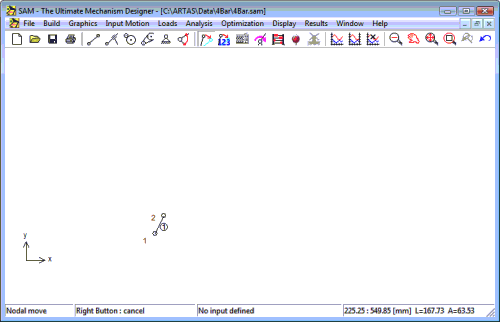
#SAM THE ULTIMATE MECHANISM DESIGNER HOW TO#
Larger mux to smaller mux How to make logic gates using multiplexers? Here’s an 8:1 multiplexer being used as a 2:1 multiplexer. You can also go the opposite way and use a multiplexer with more inputs than required as a smaller mux. Cross-check your answers with the designs below. Try designing these using only multiplexers using similar logic to the one we saw above. Similar to the process we saw above, you can design an 8 to 1 multiplexer using 2:1 multiplexers, 16:1 mux using 4:1 mux, or 16:1 mux using 8:1 multiplexer. How to design 8:1 multiplexer, 16:1 multiplexer, and so on? This is the result we get by applying our logic. That would essentially reduce the two lines to one single line. Well, we can do that by joining two select lines. If only we could just remove one select line. How do you reduce three select lines to two select lines? However, though that gives us the one output that we require, it gives us an additional select line. Since we wish to use only multiplexers, how do we combine two lines to get a single line?

If we can somehow reduce the outputs to one, it would be really easy. So joining two 2:1 multiplexers will give us four inputs, two outputs (we need only 1), and two select lines. We know that a 2:1 mux has two inputs and one select line. Let’s make a 4:1 mux using 2:1 multiplexers. You just need to make sure that you connect in a way that gives the same number of inputs and control lines as your target mux. If we have small multiplexers, but we wish to increase their functionality, we can join them to obtain a mux with more inputs. In a computer, it decreases the number of copper lines necessary to connect the memory to other parts of the computer.
#SAM THE ULTIMATE MECHANISM DESIGNER SERIAL#

I0 I1 I2 I3 S0 S1 Output 0 x x x 0 0 0 1 x x x 0 0 1 x 0 x x 0 1 0 x 1 x x 0 1 1 x x 0 x 1 0 0 x x 1 x 1 0 1 x x x 0 1 1 0 x x x 1 1 1 1

For n inputs, m select lines, where n=2^m. If you are unable to answer these questions, you still have the formula we saw above to count on. We have four inputs, what number of digits in a binary number gives you four possible combinations? Or, using how many digits in a binary number can you count up to four? Let’s now design a 4:1 multiplexer circuit.Ĭan you calculate how many select lines would be present in this mux? Now, as we increase the number of inputs, the number of select lines will increase too. In this way, the multiplexer acts as a switching circuit. The current value on the line that is selected passes to the output. Output = SI1 + S’I0 2:1 multiplexer circuit designĪs we can see in the multiplexer circuit, depending on the value of the select line (S), we can select an input line to connect it to the output. 707.1 Introduction.I0 I1 S Output 0 0 0 0 0 0 1 0 0 1 0 0 0 1 1 1 1 0 0 1 1 0 1 0 1 1 0 1 1 1 1 1įrom the k-map of the above truth table we get 545.3 Approximated Straight Line Mechanism SAM 6.1 - The Ultimate Mechanism Designer4 33Example of a 4-bar mechanism (motion analysis)ĭesign Wizards 445. 314.3 Building a new mechanism (without Design Wizard) 264.2 Using the Design Wizard to create a mechanism. 183.3 Use of SAM 3.0, 4.x and 5.x project filesĪ Guided Tour 204.


 0 kommentar(er)
0 kommentar(er)
